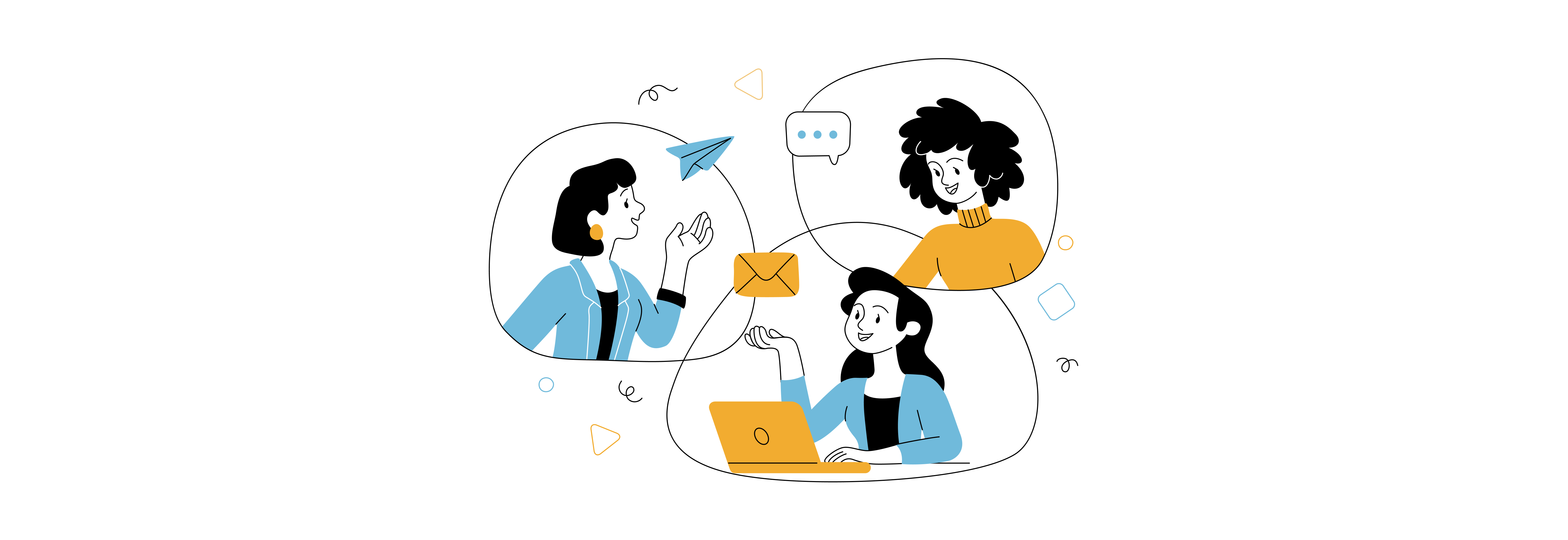The cursor blinked. And blinked. It was a tiny, rhythmic taunt on an otherwise empty digital canvas. I had a deadline, a topic I was passionate about, and a fresh cup of coffee. Yet the words refused to come. It felt like standing before a locked door without a key. If you have ever felt that same sense of paralysis, that daunting silence from the blank page, know that you are not alone. It is a feeling every single person who has ever tried to write has experienced.
For many of us, the desire to express our ideas, to share our knowledge, and to connect with others through the written word is a powerful driver for personal and professional growth. Writing is more than just communication. It is a tool for clarifying your own thoughts. But knowing its importance does not make it any easier to start. What do you do when you get stuck before the journey even begins?
I have learned that the block is rarely about a lack of ideas. It is about the friction that stands between the idea and the page. This guide is about reducing that friction. It is about finding the small, practical keys that can unlock the door and help you kick start your writing, not just once, but every single day.
Part 1: The Battle in Your Mind (Before You Write)
Table of Contents
Before a single word appears on the screen, the most significant writing happens inside your head. The primary obstacle is not technique, it is psychology. Conquering the blank page means first understanding the mental hurdles that are holding you back.
Confronting the Inner Critic
We all have an inner critic. It is that nagging voice that whispers doubts and criticisms. “This isn’t good enough.” “No one will want to read this.” “You sound foolish.” This voice is often a distorted echo of past teachers, critics, or our own deep seated perfectionism. The goal is not to silence this critic forever, which is an impossible task, but to acknowledge it and then politely ask it to leave the room while you get the first draft done.
I give my inner critic a name and a persona. When it starts its critique, I say, “Thank you for your input, but I am just getting ideas down right now. We can review this together later during the editing phase.” This simple act creates a separation between me, the creator, and the internal editor. It gives me permission to be imperfect.
Finding Your Personal “Why”
Why do you want to write? The answer to this question is the fuel that will power you through moments of doubt. Without a clear purpose, writing can feel like a chore. Your “why” does not have to be grandiose. It could be:
- To clarify your understanding of a complex topic.
- To share a solution to a problem you faced.
- To build your personal brand and establish expertise.
- To connect with a community of like minded individuals.
- To simply create a record of your thoughts and experiences.
Write down your “why” on a sticky note and place it on your monitor. When you feel stuck, look at it. This anchor will remind you that the effort is connected to a meaningful goal, making it easier to push forward.
Part 2: Building the Foundation (Creating the Habit)
Motivation is fleeting, but habits are what create results. The most prolific writers are not those who wait for inspiration to strike. They are the ones who have built a consistent practice. They treat writing like a muscle that needs regular exercise.
Also Read: 21 Micro-Habits To Improve Wellness
Create a Dedicated Writing Sanctuary
Have you ever tried to do serious work while sitting on the couch where you normally watch movies? It can be difficult because your brain has associated that space with relaxation, not focus. Creating a specific space for writing sends a powerful signal to your brain that it is time to work.
This does not mean you need a separate home office. Your writing sanctuary can be a small corner of a room, a specific chair at the kitchen table, or even your favorite local café. The key is consistency. When you are in that space, you write. You do not scroll social media or answer emails. This ritual trains your mind to switch into writing mode automatically. You can enhance this space with things that help you focus, like a particular type of music, a specific candle, or a cup of your favorite tea.
Start Impossibly Small
One of the biggest mistakes we make when starting a new habit is setting the bar too high. We declare we will write for an hour every day, and then feel like a failure when we miss one day. The secret is to start so small that you cannot possibly say no.
Commit to writing just one sentence a day.
That is it. One sentence. Anyone can write one sentence. What often happens is that one sentence turns into two, then a paragraph, then a page. But even if it does not, you have still met your goal. You have kept the promise to yourself and maintained the chain of the habit. This small, consistent action builds incredible momentum over time.
Part 3: Practical Tools to Kick Start the Engine
Once you have addressed your mindset and started building a habit, you can use specific techniques to make the act of writing itself easier. Think of these as the tools that get the engine turning.
Embrace the Power of Freewriting
Freewriting is the single most effective technique I have found for overcoming writer’s block. The process is simple. Set a timer for 10 or 15 minutes. Open a blank document. And write continuously without stopping until the timer goes off.
You do not worry about grammar, spelling, or even making sense. You do not lift your hands from the keyboard. If you cannot think of what to write, you write, “I don’t know what to write” over and over until a new thought appears. The purpose of freewriting is to bypass the internal editor completely and create forward motion. You are telling your brain that the act of writing is what matters, not the quality of the output at this stage. More often than not, you will unearth surprising ideas and phrases from these sessions.
Use an Image as Your Starting Point
Sometimes, the abstract nature of a topic can be paralyzing. A concrete visual can provide an immediate entry point. Find an image that inspires you or resonates with the feeling you want to convey. It could be a powerful photograph, a piece of art, or even a simple object on your desk.
Look at the image and start describing it. What do you see? What colors and textures are present? What story does it tell? What emotions does it evoke? You might end up writing an entire piece inspired by the image, or you might simply use it as a warm up exercise to get your creative muscles moving before you transition to your main topic.
Just Write and Find Your Flow
The state of “flow” is that magical feeling when you are so completely absorbed in an activity that time seems to disappear. You are not thinking about writing. You are simply doing it. It is the sweet spot where creativity and productivity meet.
Also Read: How To Get To a State of Flow
While flow can feel elusive, you can create the conditions for it to appear. This happens when you “just write.” It means giving yourself permission to produce a messy, imperfect first draft. Do not stop to fix typos or rephrase a clumsy sentence. That is what the editing process is for. The goal of the first pass is to get the ideas out of your head and onto the page. Perfectionism is the enemy of flow. Embrace the imperfections of a first draft and trust that you can refine them later. The most important thing is to let your inner writer move freely.
Part 4: Keeping the Momentum Going
Starting is one thing. Continuing is another. Once you have begun your writing journey, the key is to build systems that support your consistency.
The Power of an Outline
Staring at a blank page is intimidating. Staring at a page with a simple structure is manageable. Before you start writing your main piece, take a few minutes to create a basic outline. It does not need to be a formal, multi-layered document. It can be a simple list of bullet points covering the main ideas you want to discuss.
An outline is like a road map for your writing session. It removes the constant pressure of having to figure out “what comes next,” allowing you to focus your mental energy on crafting the sentences and paragraphs for one specific section at a time.
Find a Community
Writing can be a solitary activity, but it does not have to be a lonely one. Sharing your goals and your work with others can provide invaluable support and accountability. Find a writing partner, join a small group, or participate in an online community. The simple act of telling someone you will have a draft done by Friday can be a powerful motivator. A supportive community also provides a safe space to share challenges, celebrate small wins, and get constructive feedback.
A Takeaway for the Workplace
Just because you never considered yourself a “writer” does not mean you should give up. Everyone has the ability to write. You just have to find the process that works for you. Implementing these small but practical steps can do more than just help you write a blog post. It builds a foundational skill that is critical in any professional environment.
In the corporate world, clarity of thought is the ultimate currency. The act of writing is the act of thinking. When you consistently practice translating your ideas into written words, you are not just improving your communication. You are enhancing your ability to strategize, to influence, and to lead. A leader who can articulate a vision clearly and persuasively is a leader who can inspire action. The journey starts not with a grand thesis, but with a single, intentional sentence.
Developing essential skills like writing is a continuous journey. If you are focused on building a culture of clear communication and impactful leadership within your team, explore how the suite of experiential learning and development programs we offer at FocusU can help unlock your organization’s true potential.










